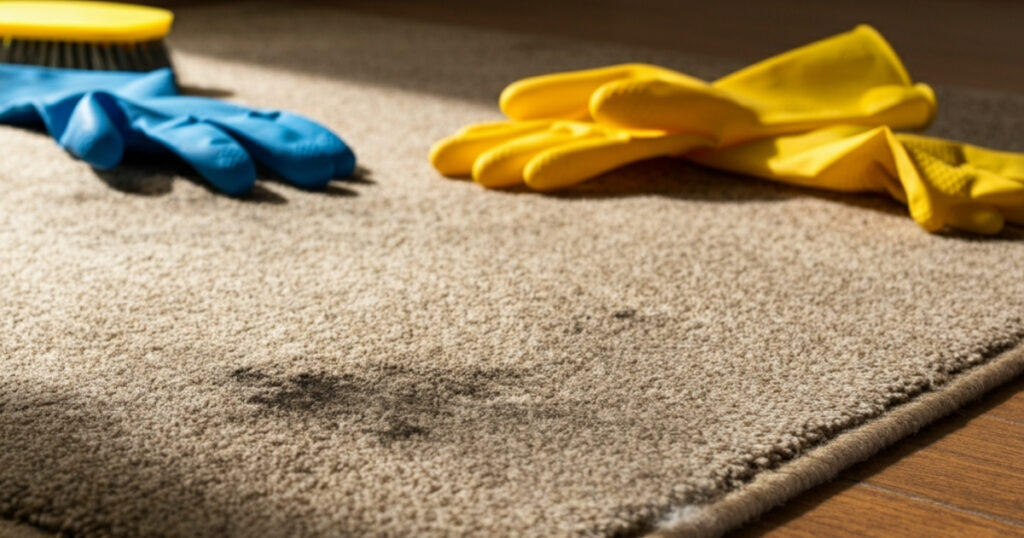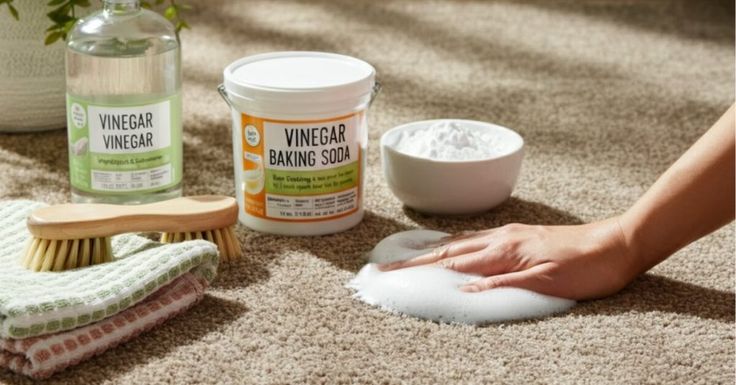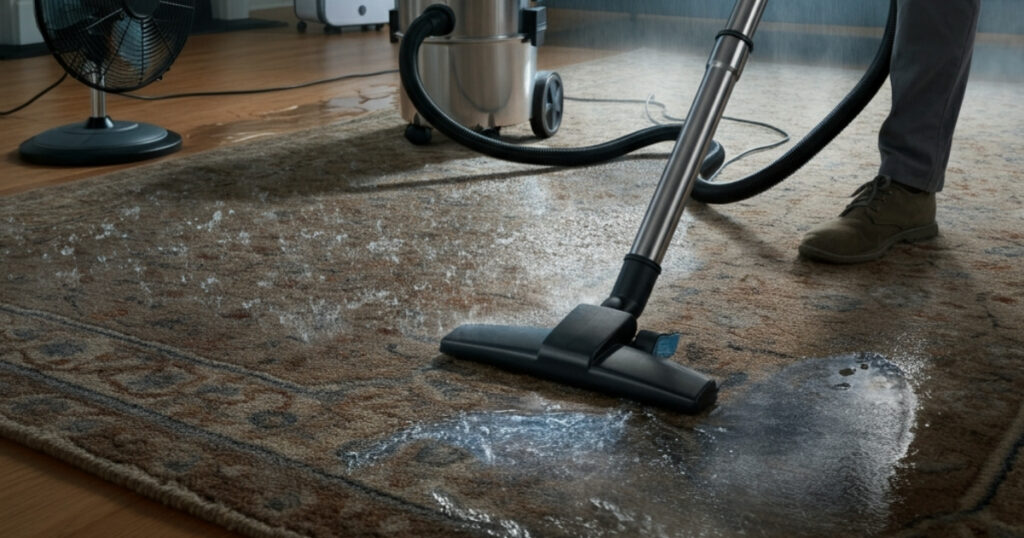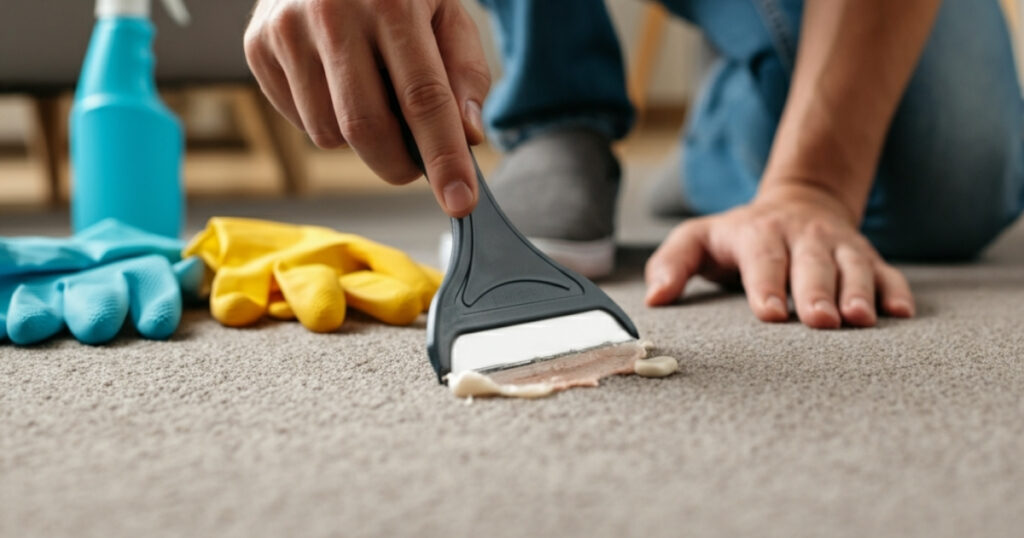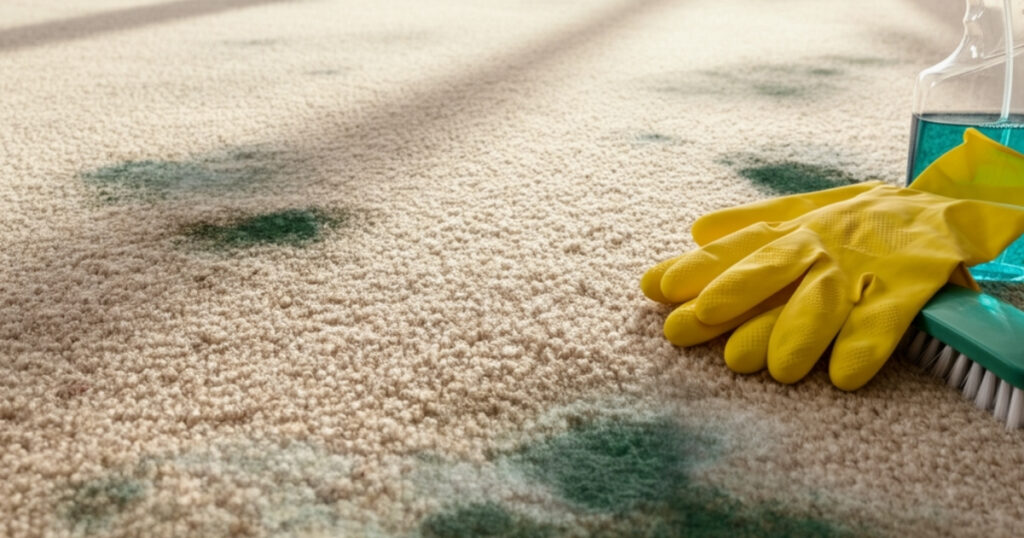As an Amazon Associate, I earn from qualifying purchases.
Finding mold in your home is unsettling, especially when it’s in your carpet. Not only is it unsightly, but it can also pose health risks and damage your flooring. If you’re wondering how do you get rid of mold in carpet, you’ve come to the right place. This guide provides a comprehensive walkthrough of everything you need to know about carpet mold removal, from identifying the problem to ensuring it doesn’t return.
Mold is a type of fungus that thrives in damp, humid environments. When mold spores land on a wet surface, like a carpet that has been exposed to a leak or high humidity, they can begin to grow and multiply. Getting rid of it requires more than just a surface clean; it involves killing the mold, cleaning the stain, and addressing the underlying moisture issue. This article will equip you with effective methods to tackle carpet mold, using both household products and professional advice to restore your carpet and protect your home.
Contents Overview
Understanding What Causes Mold in Carpet
Before you can effectively remove mold, it’s crucial to understand what causes it in the first place. Mold growth isn’t random; it requires a specific set of conditions to flourish. By identifying the root cause, you can not only treat the existing problem but also prevent it from coming back. The primary ingredient for mold growth is moisture.
Common Sources of Moisture
Your carpet can become a breeding ground for mold due to various moisture sources. Recognizing these is the first step in your mold removal journey.
- Spills and Stains: Spilling liquids on your carpet and not drying them thoroughly is a very common cause. Even small spills can seep deep into the carpet fibers and padding, creating a pocket of moisture that mold loves.
- High Humidity: Homes in humid climates or rooms with poor ventilation (like basements and bathrooms) are susceptible to high indoor humidity. When the air is consistently damp, moisture can settle into carpets and encourage mold growth. Generally, humidity levels above 60% create an ideal environment for mold.
- Leaks: Water leaks are a significant culprit. This can include a leaking roof, a cracked pipe in the wall, a faulty appliance like a dishwasher, or even condensation buildup around windows that drips onto the carpet. These leaks provide a constant source of water.
- Flooding: Major events like flooding can completely saturate your carpets. If the carpet and the padding underneath are not dried out completely and quickly (within 24-48 hours), mold growth is almost inevitable.
Why Carpet is a Prime Spot for Mold
Carpets provide an ideal environment for mold to thrive once moisture is introduced. The dense fibers trap dirt, dust, and organic materials, which serve as a food source for mold spores. Furthermore, the underlying carpet padding can act like a sponge, holding moisture for extended periods and making it difficult to dry completely. This hidden moisture in the padding is often where a mold problem begins, long before it becomes visible on the surface.
How to Check Your Carpet for Mold
Sometimes mold is obvious, presenting as a visible black, green, or white patch. However, it often grows undetected deep within the carpet fibers or on the padding underneath. Here’s how you can check for a hidden mold problem.
- Musty Odor: One of the most common signs of hidden mold is a persistent musty or earthy smell. If a room smells damp even when it’s dry, you likely have a mold issue.
- Visible Discoloration: Look for any patches of discoloration on your carpet. Mold can appear in various colors, so don’t just look for black spots. Green, white, or even pinkish stains could be mold.
- Lift the Carpet: If you suspect mold but can’t see it, carefully pull back a corner of the carpet in the affected area. Check the carpet backing and the padding underneath for any signs of mold growth or water damage. You might find dark stains or visible fungal growth.
- Health Symptoms: Unexplained allergic reactions, such as sneezing, coughing, itchy eyes, or skin rashes that worsen when you’re in a specific room, can be a sign of airborne mold spores.
Step-by-Step Guide to Carpet Mold Removal
Once you have confirmed the presence of mold, it’s time to act. For small areas of mold (less than 10 square feet), you can often handle the removal yourself. However, for larger infestations, it is always safer to call a professional. Before you start, gather your safety gear: an N-95 respirator mask, safety goggles, and rubber gloves to protect yourself from inhaling spores and skin contact.
Step 1: Ventilate the Area
The first and most important step is to ensure proper ventilation. Open all the windows and doors in the room to allow fresh air to circulate. This helps to dissipate mold spores that become airborne during the cleaning process and reduces your exposure. You can also use fans to direct air out of the windows, but do not point them directly at the moldy area, as this can spread the spores to other parts of your home.
Step 2: Dry the Carpet Thoroughly
Mold cannot grow without moisture, so your next priority is to dry the carpet completely. If the carpet is damp from a recent spill or leak, use a wet/dry vacuum to extract as much water as possible. For residual dampness, place a dehumidifier or fans in the room to speed up the drying process. You can also sprinkle baking soda over the damp area, as it is excellent at absorbing moisture and odors. Let it sit for several hours or overnight, then vacuum it up thoroughly.
Step 3: Apply a Mold-Killing Solution
After the carpet is dry, you need to apply a solution to kill the mold. There are several effective options you can use. Always test any cleaning solution on a small, inconspicuous area of the carpet first to ensure it doesn’t cause discoloration.
Using Vinegar and Baking Soda
A vinegar solution is a popular natural way to get rid of carpet mold.
- Mix equal parts white vinegar and water in a spray bottle.
- Lightly spray the solution onto the moldy area. Be careful not to oversaturate the carpet.
- Let the solution sit for about an hour to allow the vinegar to penetrate and kill the mold spores.
- After an hour, sprinkle a generous amount of baking soda over the treated area. The baking soda will react with the vinegar, creating a fizzing action that helps to lift the mold and dirt from the carpet fibers.
- Once the fizzing stops, use a stiff brush to scrub the area gently.
- Allow the spot to dry completely, then vacuum thoroughly to remove all the baking soda residue.
Using a Commercial Carpet Cleaner
You can also purchase a commercial carpet cleaner specifically designed to kill mold and mildew. Follow the manufacturer’s instructions carefully. Typically, you will apply the product, let it sit for a specified period, and then scrub or blot the area clean.
Step 4: Clean the Area
After treating the mold, you’ll need to clean the carpet to remove any remaining stains and residue. You can use a carpet shampoo or a mixture of mild dish soap and water. Use a clean cloth or sponge to gently scrub the area, then rinse by blotting with a clean, damp cloth. Avoid soaking the carpet again.
Step 5: Final Drying
The final step is to ensure the carpet is completely dry. Use a wet/dry vacuum again to pull out any remaining moisture. Then, use fans and a dehumidifier to dry the area completely. This step is critical; leaving any moisture behind can lead to the mold returning.
When Should You Call a Professional?
While DIY methods can be effective for small patches of mold, there are situations where calling a professional is the safest and most effective option.
- Large Infestations: If the mold covers an area larger than 10 square feet, it’s considered a large infestation that requires professional remediation.
- Mold in the Padding or Subfloor: If the mold has penetrated deep into the carpet padding or the subfloor, surface cleaning won’t be enough. Professionals have the equipment to handle this.
- Recurring Mold: If the mold keeps coming back despite your cleaning efforts, it indicates an underlying moisture problem that a professional can help identify and fix.
- Health Concerns: If someone in your household has a compromised immune system, severe allergies, or asthma, it is best to leave mold removal to the experts to avoid health risks.
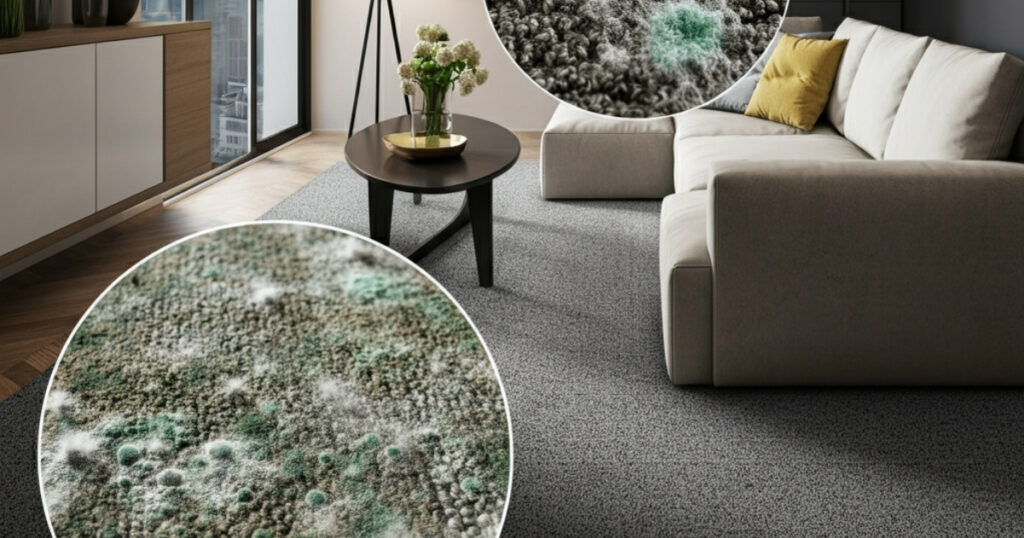
FAQs About Getting Rid of Mold in Carpet
1. Can I use bleach to kill mold on my carpet?
No, it is generally not recommended to use bleach on carpets. Bleach can discolor and damage carpet fibers. More importantly, it may not be effective at killing mold on porous surfaces like carpet, as the mold can have roots deep within the padding that the bleach cannot reach.
2. How long does it take for mold to grow in a wet carpet?
Mold can begin to grow on a wet carpet within 24 to 48 hours. This is why it is so important to dry any spills, leaks, or flooding incidents as quickly as possible.
3. Is baking soda effective at killing mold?
Yes, baking soda is effective in a multi-step cleaning process. While it can kill some surface mold and is excellent at absorbing moisture and odors, it works best when combined with a stronger agent like vinegar to ensure all mold spores are eliminated.
4. Can I just steam clean moldy carpet?
No, steam cleaning alone is not recommended for killing mold. The heat and moisture from a steam cleaner can actually provide a better environment for mold to grow if the carpet is not dried completely and immediately afterward. You must use a mold-killing solution first.
5. Is it possible to completely remove mold from a carpet?
Yes, it is possible to completely remove mold from a carpet, especially if the infestation is small and caught early. However, for severe cases, or if the padding is heavily contaminated, the carpet may need to be replaced.
Creating a Mold-Free Home
Successfully getting rid of mold in your carpet is a great achievement, but the job isn’t done until you take steps to prevent it from returning. The key to long-term success is moisture control. Regularly check for leaks in your home, use dehumidifiers in damp areas like basements, ensure good ventilation in bathrooms and kitchens, and clean up any spills on your carpet immediately and thoroughly. By staying vigilant, you can keep your carpets clean, fresh, and, most importantly, free of mold.
As an Amazon Associate, I earn from qualifying purchases.

